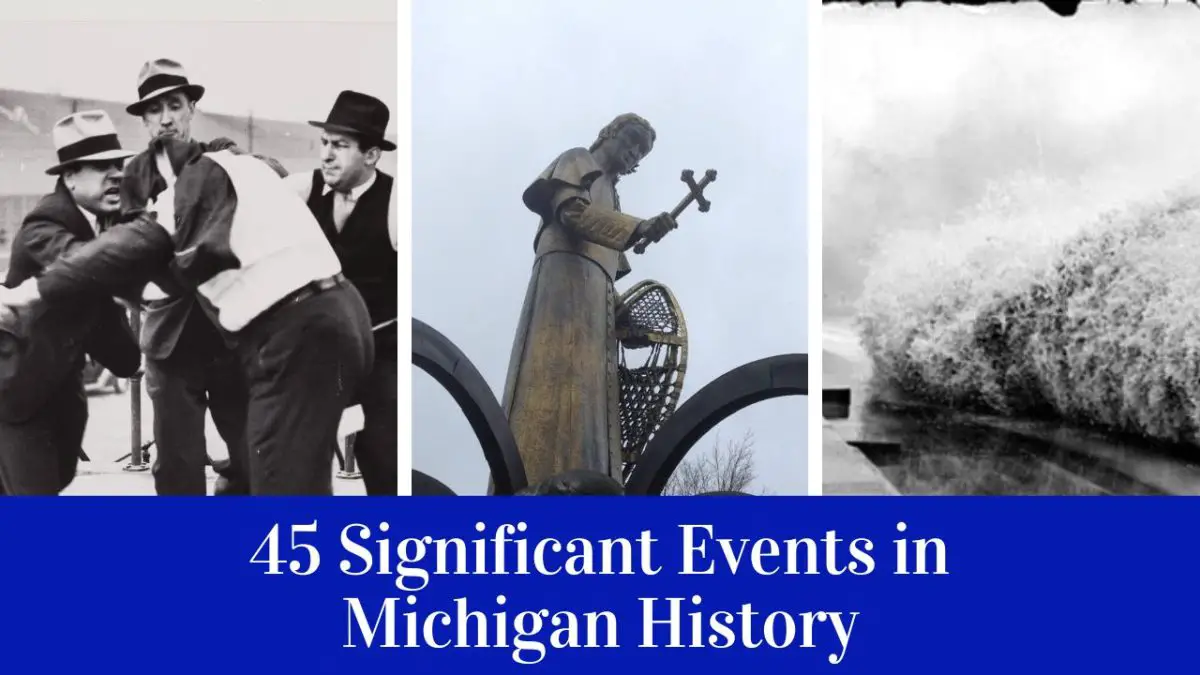Michigan has had a fascinating history in the Great Lakes region. After Europeans first set foot in Sault St Marie, it attracted the colonial powers of France, Great Britain, and even Spain. After the United States became a country, one of the first acts was to denote the Northwest Territory from which Michigan would come. Michigan became the 26th state on January 26, 1837. Here, we will briefly review some significant events in Michigan’s history and how they’ve helped shape it into what it is today.
Dates and Significant Events in Michigan History
1622 – First Europeans See and Explore Lake Superior
Étienne Brulé and his companion Grenoble were most likely the first Europeans to see Lake Superior. He traveled around Lake Superior in 1622 or 1623, but the account of his journey was only written down from hearsay after his death by Gabriel Sagard-Theodat. They came across the Ojibwa who lived near the St. Mary’s River rapids, and the French began to refer to them as “Saulteaux,” a word derived from the French word sault or rapids.
1668 – Catholic Mission Established at the Soo
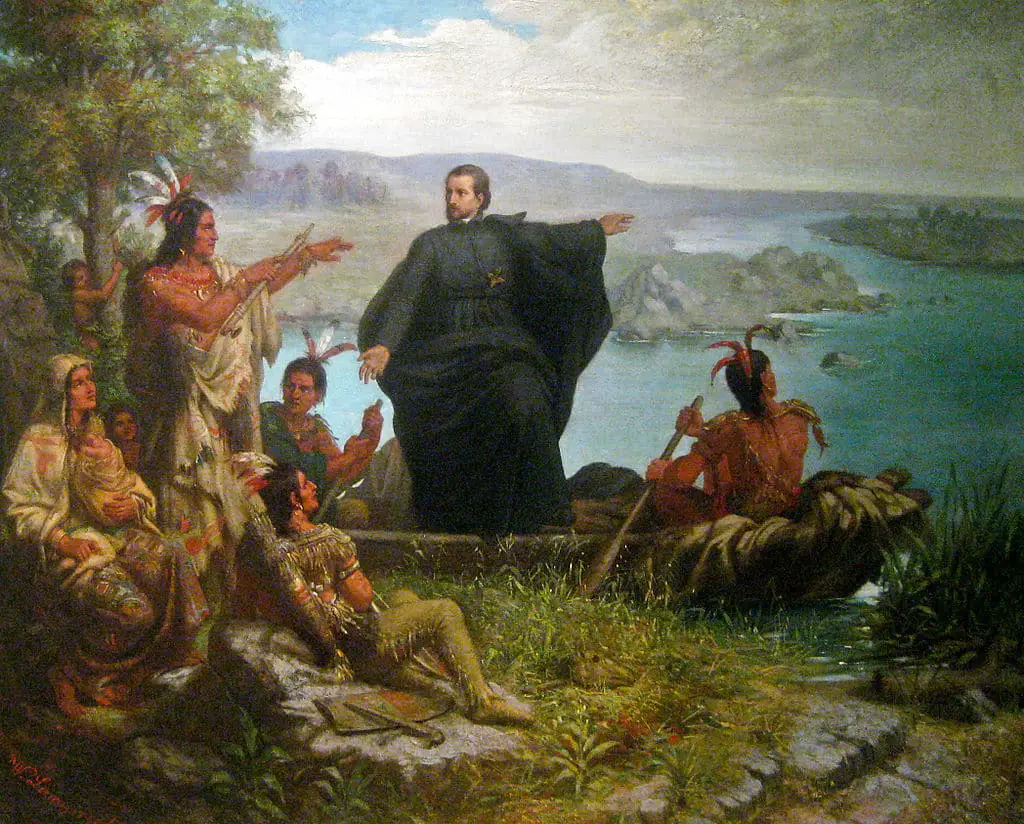
Fathers Jacques Marquette and Claude Dablon established the first mission on the St. Marys River at the Sault Ste. Marie. The mission serves to establish Sault Ste. Marie is one of the United States’ oldest cities.
1671 – Mission Established at St. Ignace
Father Jacques Marquette brought Hurons to the Straits of Mackinac and established the Mission of St. Ignace on the north side of the straits near the existing Odawa village. As a result, the fur trade thrives in the area surrounding St. Ignace’s mission. Fort de Buade was built near the mission between 1688 and 1690 in response to King William’s War. Fort de Buade, on the other hand, was abandoned when most local Huron and Odawa moved south to Detroit.
1679 – Voyage of the First Sailing Ship on the Great Lakes; The Griffin
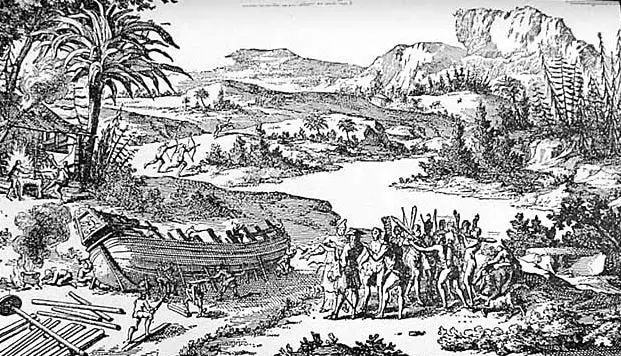
René-Robert Cavelier, Sieur de La Salle, arrives at St. Ignace Mission aboard the Griffin, the upper Great Lakes’ first large sailing vessel. Griffin vanishes between Green Bay, Wisconsin, and St. Ignace on its way back, laden with furs.
1701 – Cadillac Established Detroit
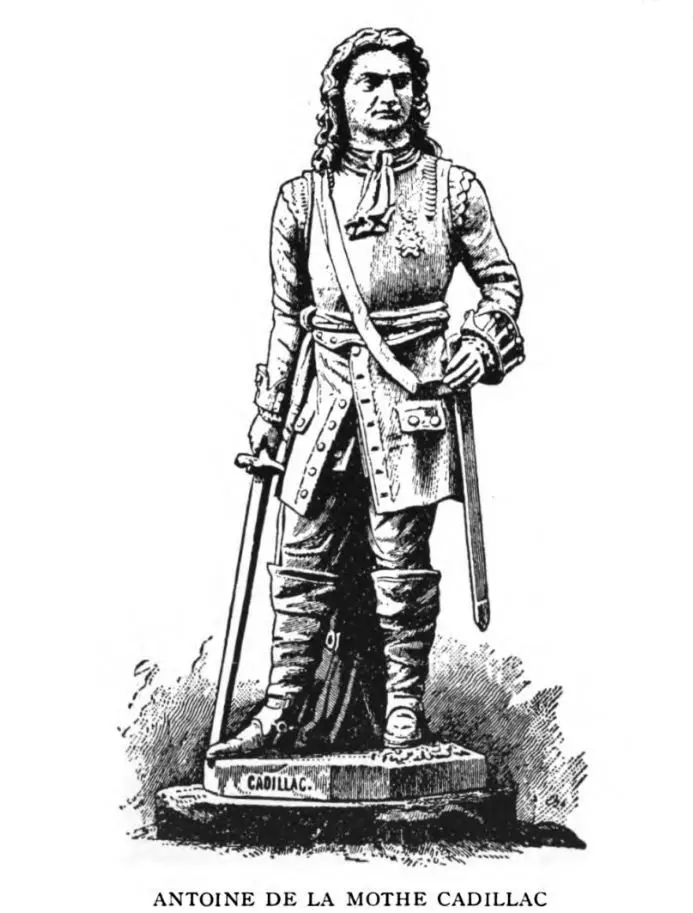
Antoine de la Mothe Cadillac established Detroit and began Fort Pontchartrain. Cadillac convinced King Louis XIV of France of the strategic advantages of a location to the south, closer to advancing British interests, after commanding the fort at Michilimackinac. Cadillac and a group of 100 colonists, soldiers, and missionaries set out from Lachine on the St. Lawrence River near Montreal on June 5, 1701. The expedition traveled up the Ottawa River, Lake Nipissing, the French River, Georgian Bay, Lake Huron, the St. Clair River, Lake St. Clair, and finally, the Detroit River. On July 23, the expedition camped on Grosse Ile.
The expedition returned upstream the next day and chose a location for the new settlement on a bluff on the northern shore from which they could best control the river. Cadillac claimed the new French territory. The expedition began construction on Fort Pontchartrain du Detroit, named after the French marine minister who approved their journey and the narrow strait, le détroit in French, where it was located. Cadillac governed Detroit until 1710.
1715 – France Builds Fortifications at Mackinac
The French established Fort Michilimackinac at the Straits of Mackinac in an area just north of where Mackinac City resides. This fortified community became the excellent fur trade center of the Northwest until its relocation to nearby Mackinac Island in 1781.
1760 – The French Give Up Detroit
The French handed over Fort Pontchartrain to the British, effectively ending French rule in Detroit. This followed the capture of Montreal by British General Amherst, and the Articles of Capitulation stipulated that all remaining French holdings, including Detroit, were to be included in the spoils. There was little point in defending Detroit after British forces took Quebec on September 13, 1759.
When Major Robert Rogers and his troops took command of Detroit, the British discovered that it had a population of about 2,000 people and 300 buildings.
1763 – Chief Pontiac Lays Siege on Detroit
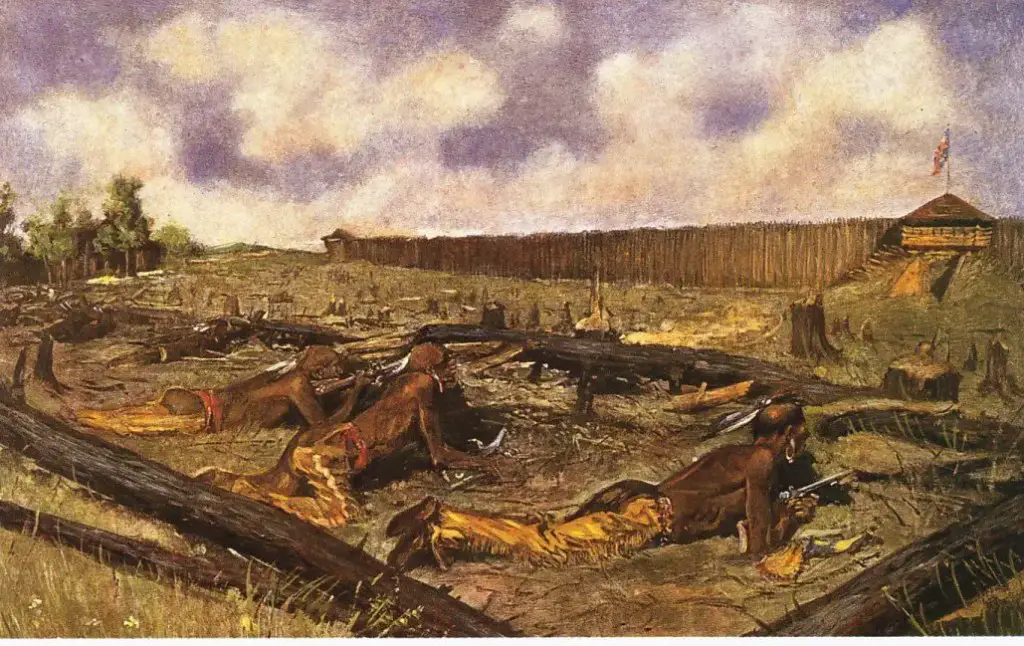
During the Indian wars in the area, Chief Pontiac leads a 135-day siege of Detroit. Indians capture all the forts in Michigan except Detroit. Pontiac and a spiritual medicine man named Neolin spread a message that encouraged Ohio Country tribes to unite and rise against the British. Many view the Ottawa attack on Fort Detroit in May 1763 as the beginning of the so-called Pontiac’s Rebellion. Interestingly, many of the powerful Odawa tribe of Arbor Croche in northwest Michigan refused to participate in the uprising. Their stance may have led to the failure of the uprising.
1781 – Spain Captures Fort St. Joseph
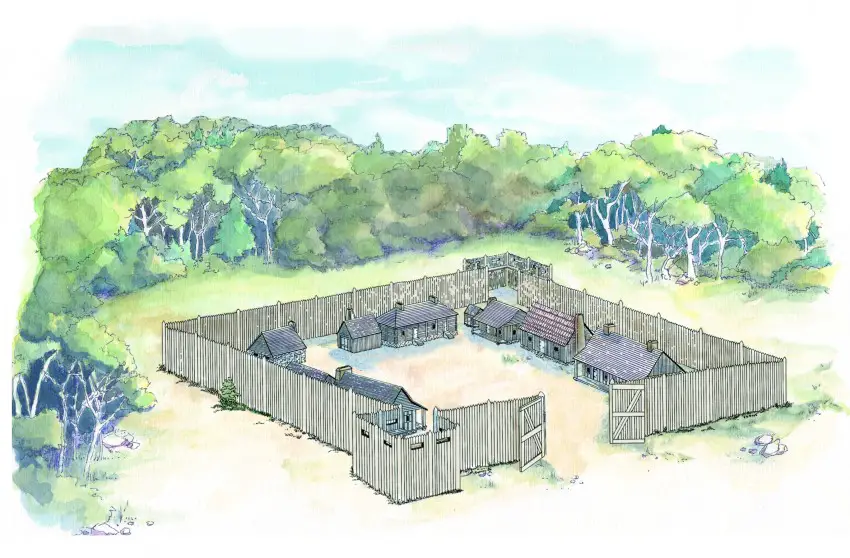
Sixty members of the Otaguis, Sotu, and Putuami tribes, 30 Spaniards, and 35 French Fur Traders marched from St. Louis and captured Fort St. Joseph from the British near present-day Niles. The Spanish flag flies over Michigan.
1787 – Northwest Territories Established Over Great Lakes Region
The Northwest Ordinance of 1787 established the procedure for obtaining statehood in the Northwest Territory, of which Michigan is a part. This established a chartered government for the Northwest Territory, selected a method for admitting new states to the Union from the territory, and listed a bill of rights guaranteed in the territory. These rights included the protection of religious freedom, the right to a writ of habeas corpus, the right to a jury trial, and other individual rights. The ordinance also encouraged education and prohibited slavery.
1792 – First Election Held in Michigan
Following the American Revolution (1776-83), loyalist settlers arrived in Canada, seeking representative institutions and English common law; British merchants in Quebec and Montreal also called for a legislative assembly. Michigan holds its first election while still under British occupation and rule under the British Parliament’s Constitutional Act. George Washington was elected President of the United States the same year.
1796 – British Leave United States Lands in Northwest Territories
Under the terms of the Jay Treaty (November 19, 1794), The British evacuated Detroit and abandoned their posts on the Great Lakes. The treaty also established joint commissions to determine the boundaries between the U.S. and British North America. Thus setting up future boundaries for the Michigan Territory.
1805 – Michigan Territory Established, Fire Destroys Detroit
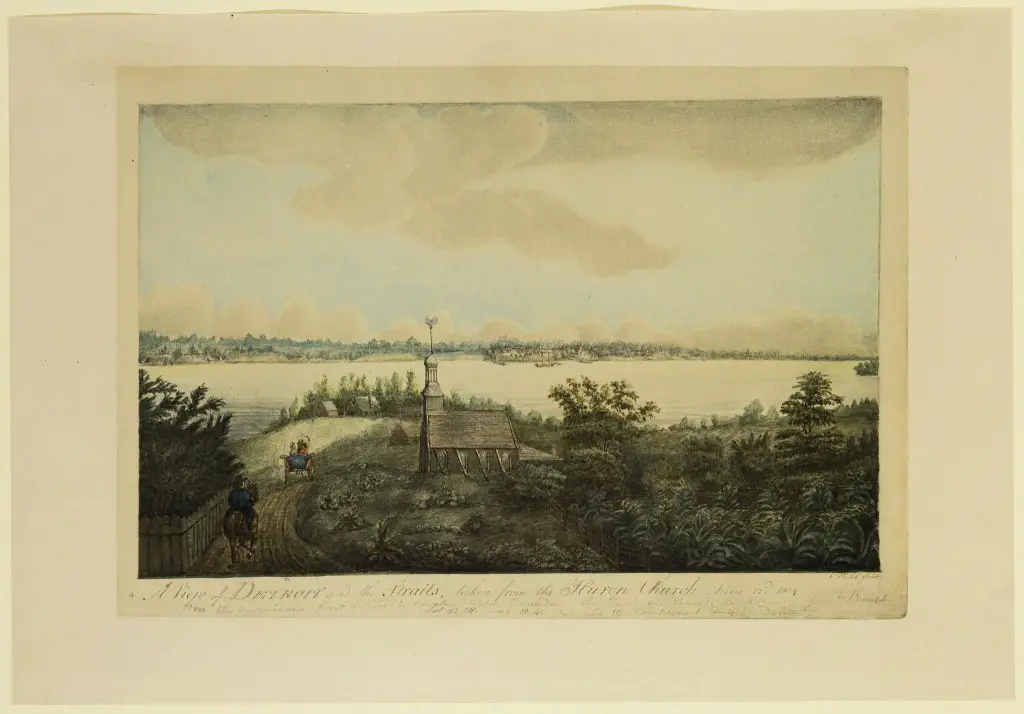
The Michigan Territory was established in 1805 with Detroit appointed as its government seat (Michigan Department of Natural Resources, n.d.). William Hull, an experienced military officer, was appointed as the territory’s first governor (Burton, 1909). He led the region during the tumultuous War of 1812 period (Widder, 2012). Hull’s leadership proved to be controversial and ended with his court-martial (Widder, 2012). Despite the early challenges, Michigan Territory laid the foundation for the present-day state.
On the morning of June 11, 1805, ashes from a smoker’s pipe caught a barn on fire. The blaze quickly spread throughout the small city of Detroit, and nearly everything was destroyed. The city is rebuilt with a French-inspired hub and spoke road plan modeled after Washington, D.C.
1812 – War With Great Britain
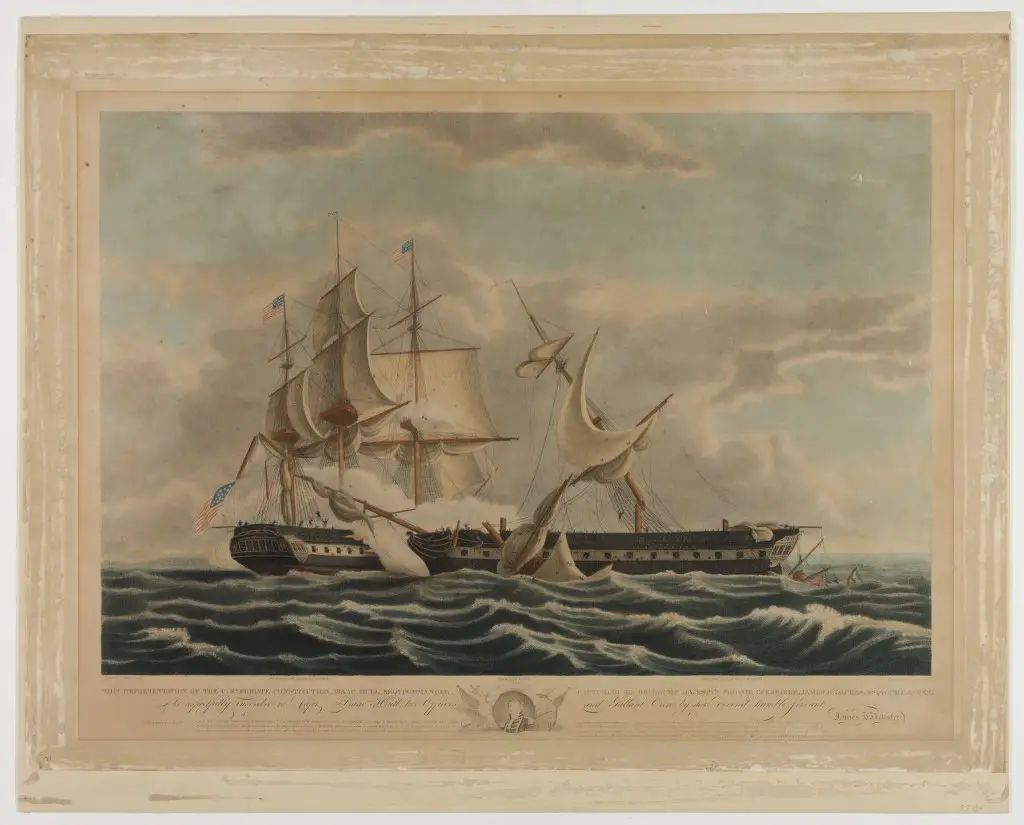
On July 17, 1812, a combined force of British, Canadian, and Native American soldiers stormed Mackinac Island, capturing Fort Mackinac from a small, unsuspecting American garrison. During the War of 1812, Detroit and Fort Mackinac surrendered to the British.
This conflict culminated in the summer of 1814 when the United States sent seven warships and nearly 1,000 men on a two-month expedition to recapture the island. On August 4, British and American troops clashed on Mackinac Island, resulting in American defeat.
1813 – United States Recaptures Detroit
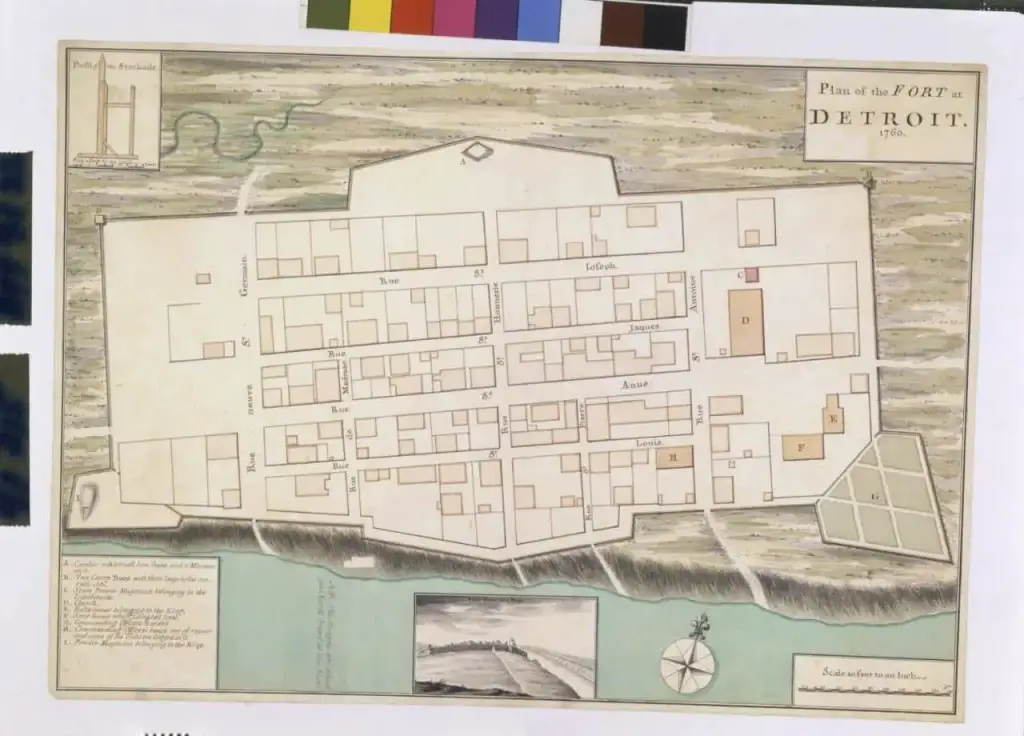
American forces re-enter Detroit. Lewis Cass is appointed Governor of the Michigan Territory. Further north, the Treaty of Ghent, which ended the War of 1812, brought Mackinac Island back to the United States.
1819 – Treaty of Saginaw Expands Settlement Outside Of Detroit
The Treaty of Saginaw grants Michigan settlers nearly 6 million acres of Indian land. Gen. Lewis Cass signed a treaty with the Chippewa, Chief Mash Kee Yosh, Chief John Okemos, Chief Wasso, and other Native American tribes from the Great Lakes region. It states that the United States will pay the tribes $1,000 in silver annually in perpetuity.
1828 – First Michigan Capital is Built
For a total of $24,500, the Territorial Capitol was constructed in Detroit. Between May 5, 1828, and March 17, 1847, when the capital was transferred from Detroit to its permanent location in Lansing, this edifice also housed the State legislature’s chambers. The structure housed a public library and school until it burned down in 1893.
1835 – The Michigan-Ohio War
A tense situation developed with Ohio when Michigan petitioned for statehood in 1835 and sought to include the dispute extending from Toledo to the Indiana border. Dubbed The Toledo War, it was nothing more than posturing by local militias. Shots were fired in the air, and a local policeman was stabbed.
Congress offered a compromise letting Ohio keep the strip of land in exchange for the western section of the Upper Peninsula. During Michigan’s first constitutional convention, the proposal for the swap is rejected. President Andrew Jackson intervened and forced another convention that accepted the swap and resolved the conflict. Twenty-four-year-old Stevens T. Mason is inaugurated as Governor.
1837 – Michigan Becomes a State
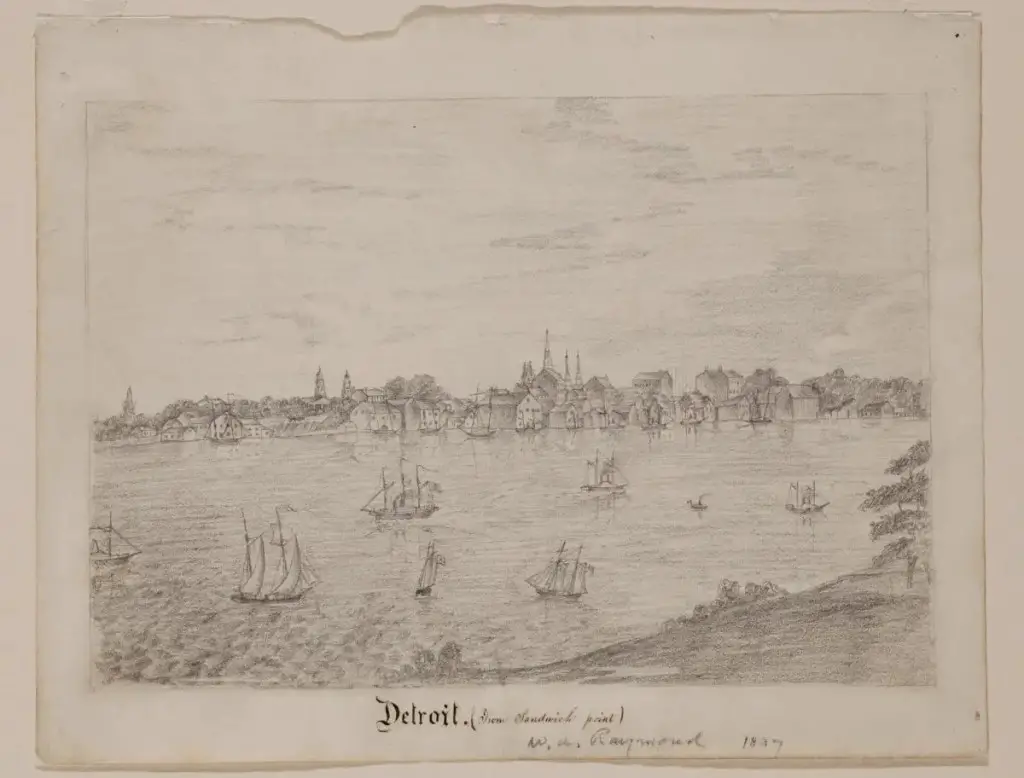
Michigan is admitted to the Union as the 26th state.
1837 -The University of Michigan relocated from Detroit to Ann Arbor
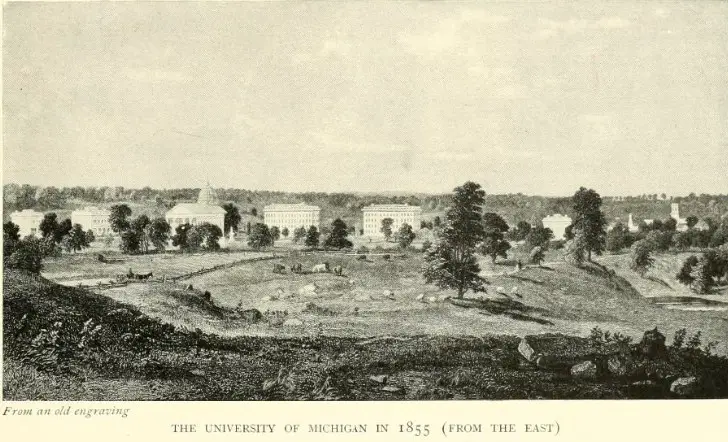
The University of Michigan, initially established in Detroit in 1817, relocated to Ann Arbor in 1837. The move was motivated by Ann Arbor’s more favorable location, robust community, and promise of larger grounds. This relocation paved the way for the university’s growth into one of the leading educational institutions globally. The original 40-acre parcel is known today as the “Diag.” Today, the University of Michigan is an icon of Ann Arbor, significantly contributing to the city’s cultural and economic vibrancy. (Source: “University of Michigan”, Encyclopædia Britannica)
1842 – Copper Boom Begins in the Upper Peninsula
Copper mining operations begin near Keweenaw Point. This is the same area that Michigan received to resolve the Michigan-Ohio war. Mining operations result in a population and economic boom in the young state.
1844 – Iron Ore Discovery
Iron ore is discovered in the Upper Peninsula at Negaunee by William Austin Burt and his surveying crew. Iron mines opened all across the central Upper Peninsula within a few years. The Jackon mine is the first iron range in Michigan.
1846 – Michigan Stops Capital Punishment
Michigan abolished capital punishment for all murders and other common crimes.
1847 – State Capital Moves to Lansing
With the passage of Public Act 60, the state capitol is relocated to Lansing Township, presently Lansing.
1854 – The Republican Party was organized in Jackson, Michigan
In 1854, the Republican Party was organized in Jackson, Michigan. This political group was formed by anti-slavery activists, modernizers, and ex-Whigs. The party’s primary aim was to oppose the spread of slavery into western territories. They believed that this could potentially destroy the republic. This historical event marked the emergence of a powerful political faction in the United States. (Source: The U.S. National Archives and Records Administration)
1855 – First Locks Established at the Soo.
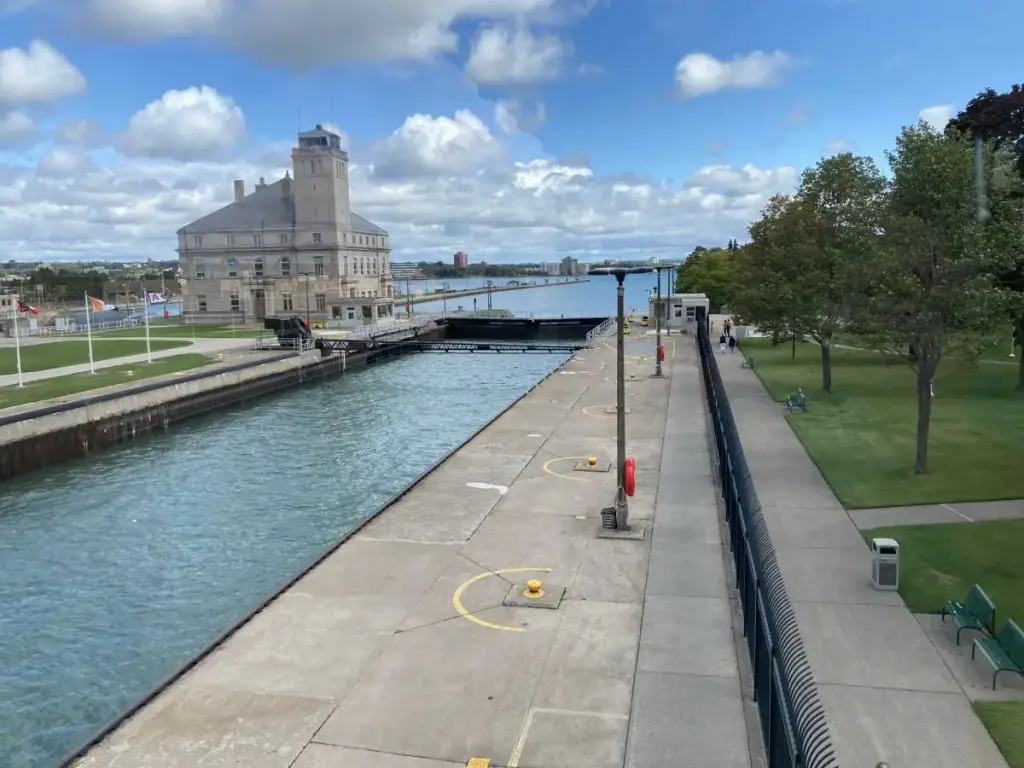
In Sault Ste. Marie, the ship canal opens. The state of Michigan administered it until 1881 when it was turned over to the American Army. The Weitzel Lock, the first federal lock, was constructed in 1881, and the MacArthur Lock succeeded it in 1943.
1861-1865 Michigan Enters the Civil War
More than 90,000 Michigan men are mustered into service during the Civil War.
1871 – Great Michigan Fire
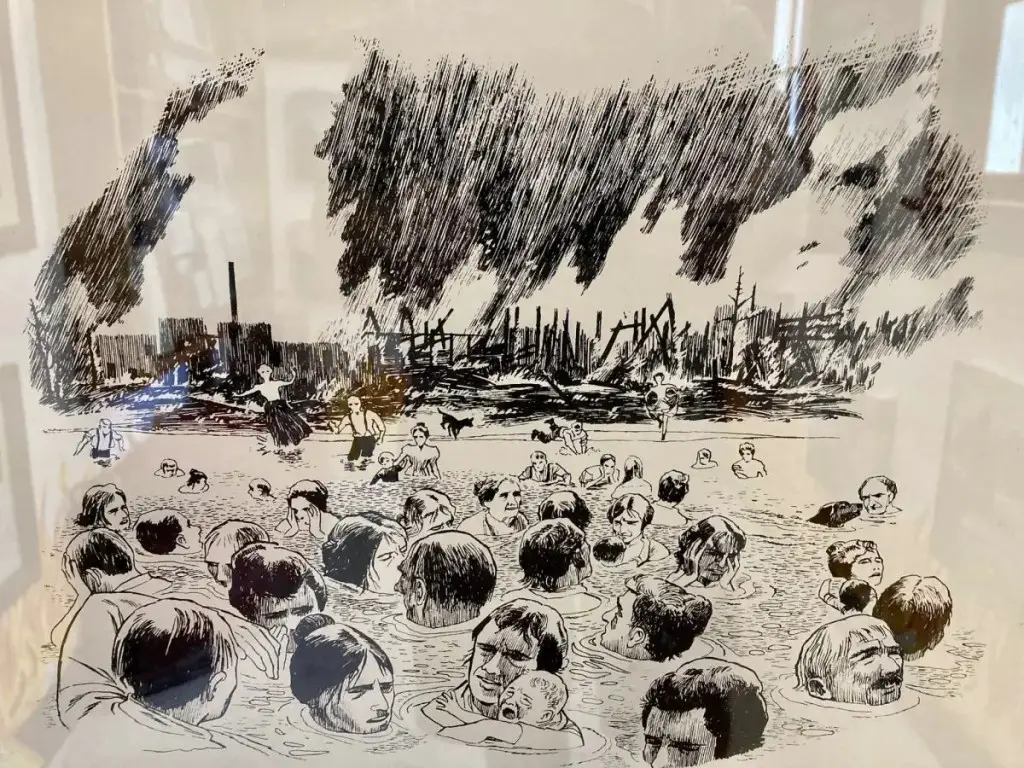
The summer of 1871 in Michigan’s Thumb was oppressively hot and dry. Farmers watched their crops wither in the dry heat. On October 8, fires near Peshtigo, Wisconsin, and Chicago erupted.
The situation in Michigan’s Thumb could not be direr. The prevailing winds carried embers and dense smoke from the other Michigan fires burning to the west. The forest fires that began in Manistee marched through Grayling and Big Rapids in just over 30 hours. It swept through Isabelle, Midland, and Bay counties before coming to a halt in Gratiot County, where no lumbering had occurred. The reprieve was only temporary. Burning embers along the Cass River ignited small piles of slashings until they reached Caro. Once there, piles of dry logging brush allowed it to blast across and up the Thumb.
Video: When The Midwest Burned – The 1871 Great Michigan Fire
In the end, the 1871 Great Michigan fire burned over an estimated 2 1/4 million acres of land in the upper Midwest, destroying at least 4 billion feet of prime timber. It claimed nearly 2,500 lives, including about 800 in Peshtigo alone.
1879 – Capital Completed in Lansing
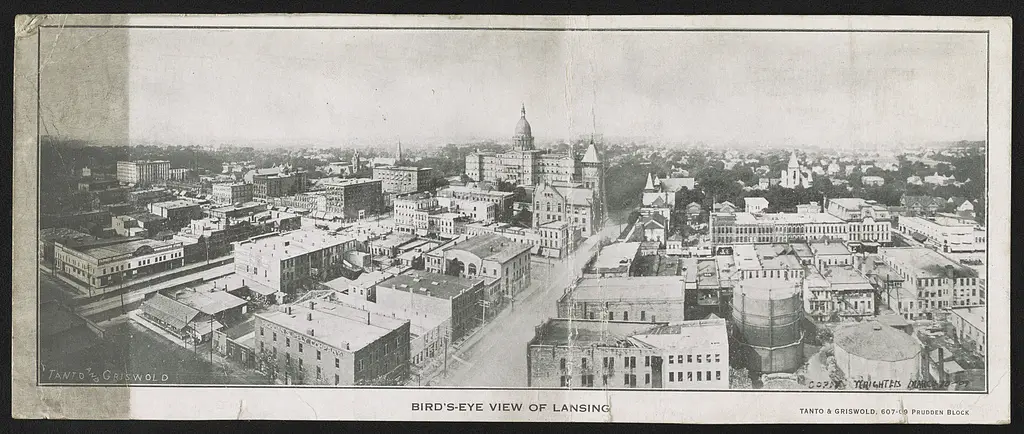
The new Capitol, which had 139 rooms after construction and finishing was finished, was declared “ready for delivery” on September 23, 1878. There were formal dedications following Governor Croswell’s inauguration on January 1, 1879. The building’s price is $1,510,130.
1881 – Great Michigan Thumb Fire
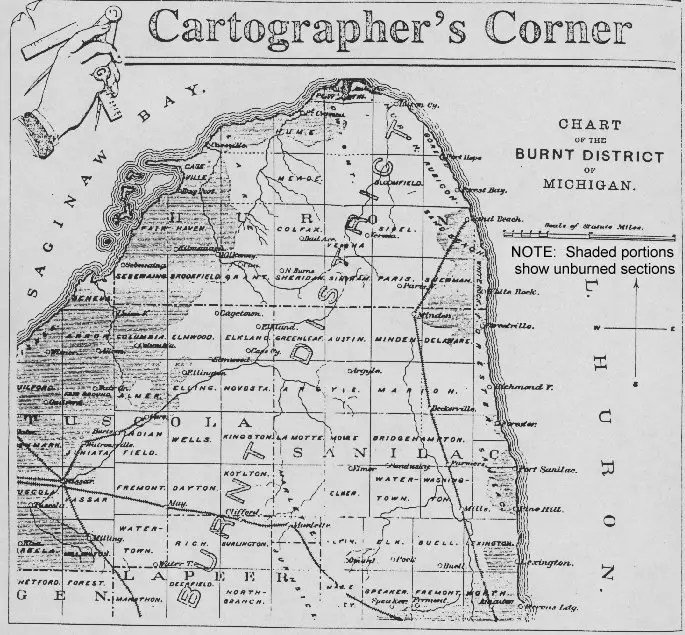
The fires of September 4 through the 6th, 1881, commonly known as the Thumb Fire, took hundreds of lives and burned well over one million acres. The fire destroyed significant parts of Tuscola, Huron, Sanilac, and St. Clair counties. It forever altered the landscape of the Upper Thumb, and its effect is seen in the area today.
Clara Barton founded the American Red Cross in 1881. The organization’s first meeting was held in Washington, DC, at the home of Michigan Senator Omar D. Conger. The Red Cross’s first official disaster relief operation was in response to the Thumb Fire, and they provided money, clothing, and household items to fire victims.
1908 – Mass Production of Automobiles
Ford Motor Company began producing the Model T. Henry Ford desired that the Model T be inexpensive, simple to operate, and long-lasting. The vehicle was one of the first mass-produced vehicles, allowing Ford to realize his goal of producing the universal car. The Model T ranged in price from $260 to $850.
1911 – Michigan Adopts Great Seal and Flag
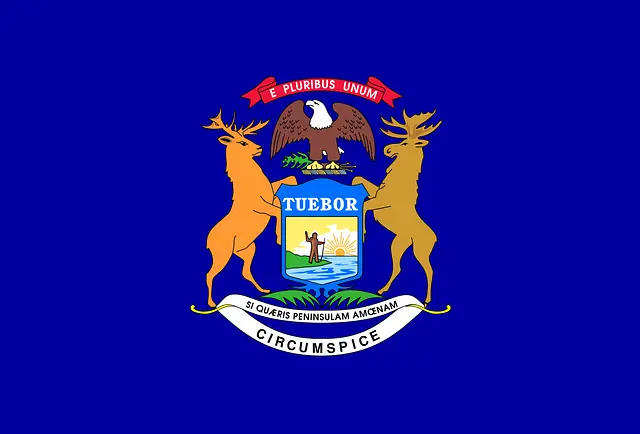
The Great Seal of Michigan appears on the flag of Michigan, which the Legislature adopted in 1911. The Seal was created by Lewis Cass, the second governor of the Michigan Territory (1813–1831), and the 1835 constitutional convention endorsed it.
The elk on the left and the moose on the right are depicted on Michigan’s Great Seal as they stand in front of a shield that says Tuebor, which translates to “I will defend” and refers to Michigan’s status as a pioneer state.
The sun rising over a lake in the shield’s interior highlights a man standing on a peninsula. His right hand is lifted in a gesture of peace on the figure. He has a rifle in his left hand, indicating that he is prepared to defend the state and the country as well.
Si quaeris peninsulam amoenam circumspice, which translates to “If you seek a pleasant peninsula, look about you,” is written beneath the shield.
The motto of the United States, E Pluribus Unum, which translates to “Out of many, one,” is displayed above the shield with the American eagle.
1913 – The White Hurricane Great Lakes Storm
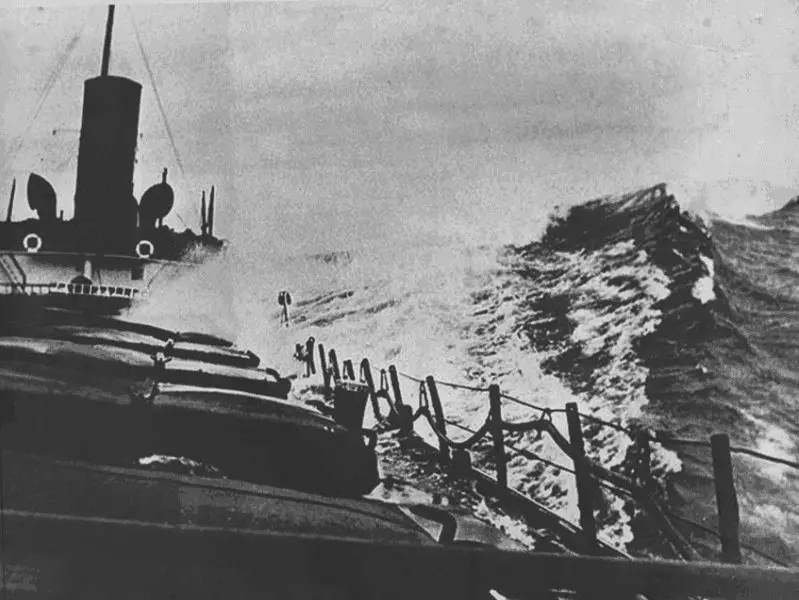
The White Hurricane was formed by two storm fronts’ combined forces colliding with gale-force winds bringing 35-foot monstrous waves and driving snow and ice that doomed anyone caught out on the big lake. The most significant losses in lives and ships occurred on Lake Huron, where 27 were lost or severely damaged. All told, 19 ships went to the bottom of the lake, and a total of 248 souls were lost. Many of the ships that went down were along the Michigan Thumb coastline.
The 1913 storm remains the most devastating natural disaster ever to strike the Great Lakes.
1919 – Women Get the Vote in Michigan
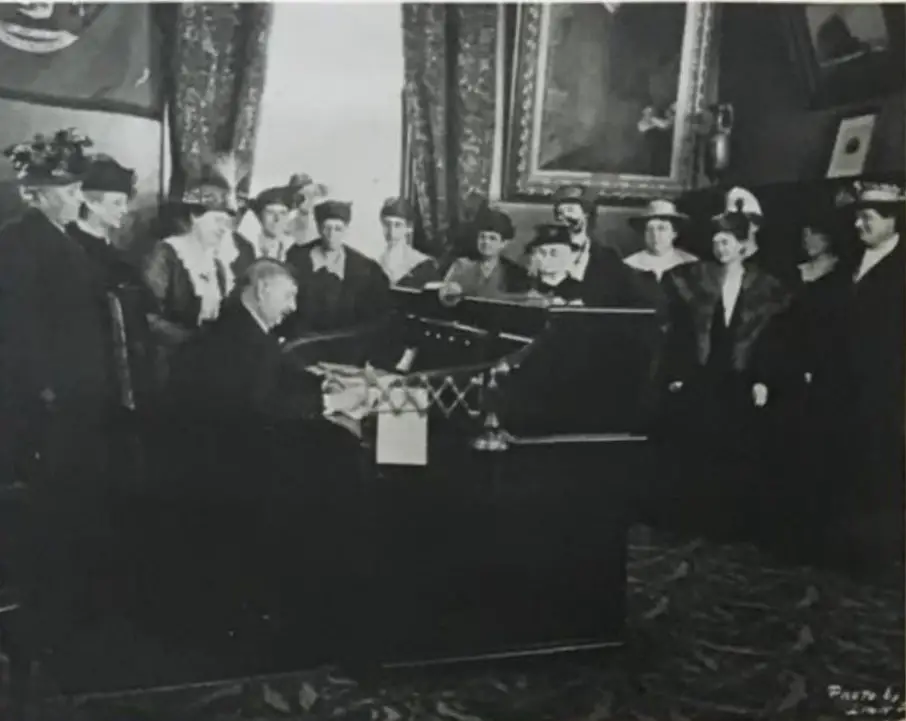
A state constitutional amendment granting suffrage to Michigan women is passed. In 1917, after years of activism, Governor Sleeper signed a bill granting Michigan women the right to vote in presidential elections. In 1918, Michigan approved a state constitutional amendment to pass women’s suffrage.
The next year, Congress finally passed the 19th Amendment in 1919. After Congress approved the Amendment, 36 states needed to ratify the amendment to become part of the U.S. Constitution. Michigan became one of the first states to ratify the amendment on June 10, 1919. It passed unanimously. In August of 1920, the 19th Amendment was ratified nationwide under President Wilson.
1920 – First Commerical Radio Station in The US
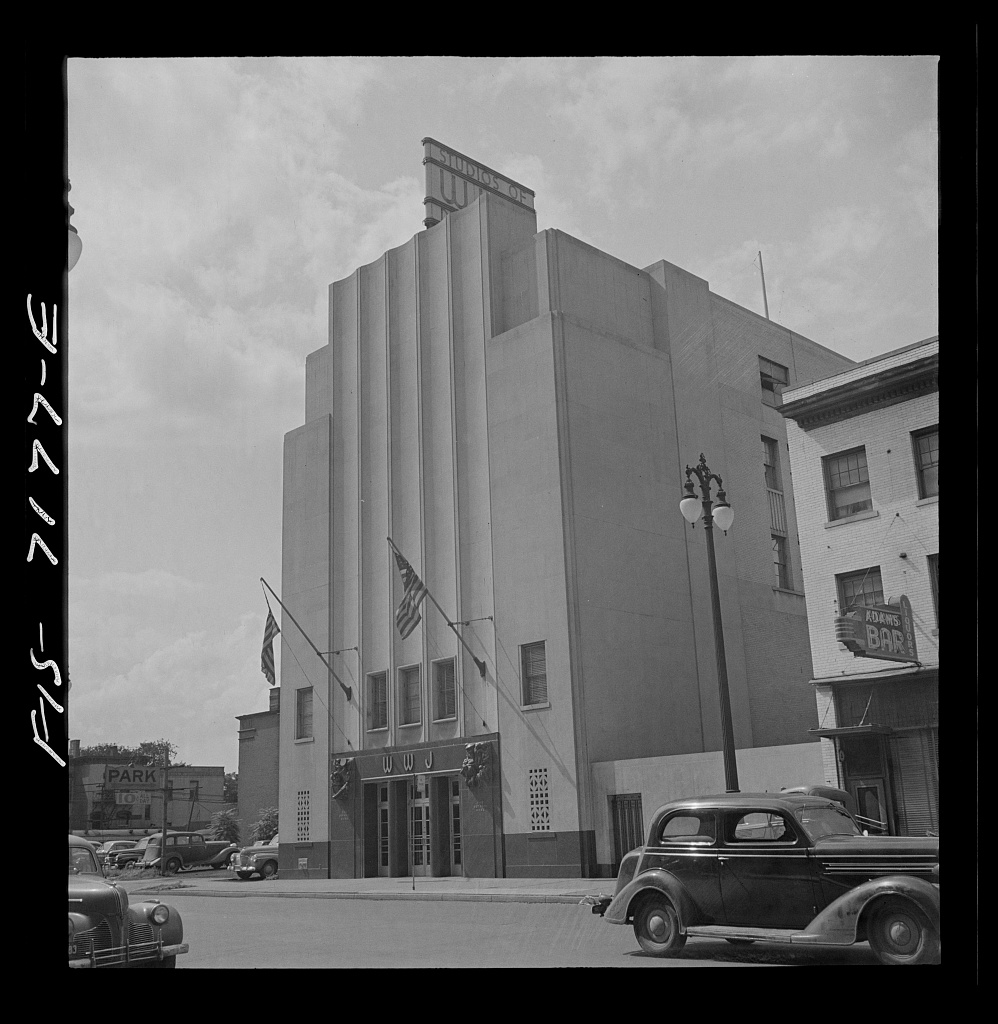
WWJ, formerly known as 8MK, first broadcast on August 20, 1920. The station broadcasted from the second floor of the Detroit News building, the world’s first newspaper to have a radio station. 8MK in Detroit began commercial broadcasting of music and local news. It is regarded as one of the country’s first radio stations. Three hundred radio amateurs were potential listeners, despite the transmission area being less than 100 miles. 8MK’s call letters were changed to WBL in 1921 and WWJ in 1922.
1930 – Tunnel to Canada Opens

In the late 1800s, rail was the sole option for long-distance transport. The first international tunnel was completed in 1891 between Port Huron, Michigan, and Sarnia, Ontario. It was followed in 1910 by the Michigan Central Railway Tunnel between Detroit and Windsor.
The first vehicular traffic tunnel constructed between the two nations is the mile-long Detroit-Windsor tunnel beneath the Detroit River. Its construction started in 1928 and was finished in 1930. The second-busiest border crossing between the United States and Canada is the Detroit-Windsor Tunnel. The busiest crossing in Detroit is the Ambassador Bridge.
1933 – Michigan’s first Civilian Conservation Corps (CCC) Site
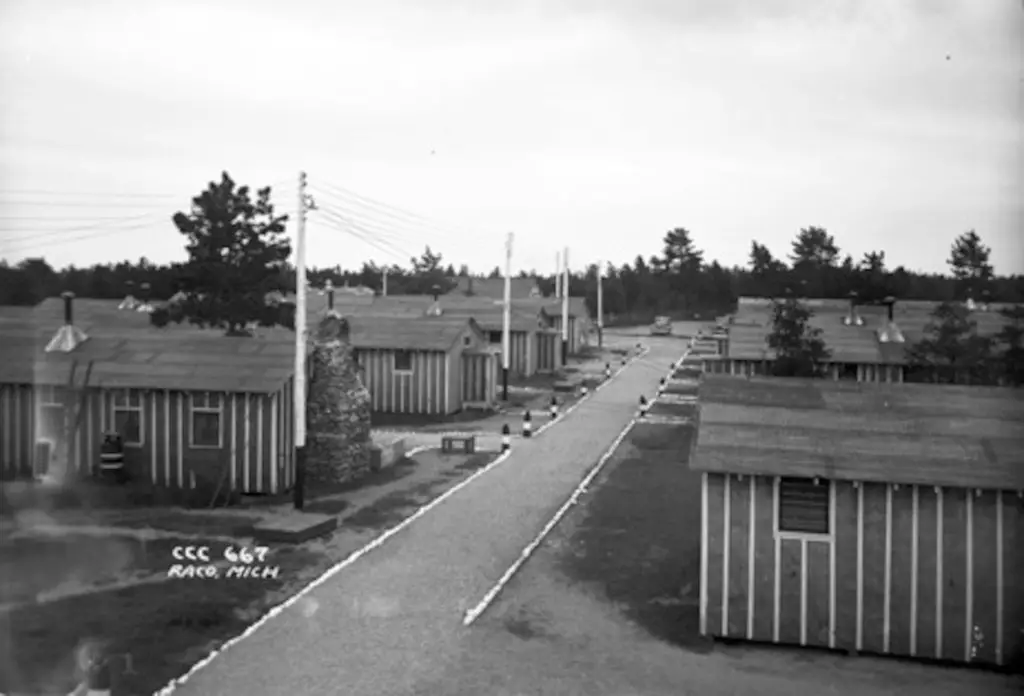
On May 2, 1933, Detroit sent 200 young men to Chippewa County, Michigan, to an isolated spot. They established Camp Raco, Michigan’s first Civilian Conservation Corps (CCC) facility. The CCC was a public work relief program, part of President Franklin D. Roosevelt’s New Deal. The program provided unskilled manual labor jobs for conserving and developing natural resources. The establishment of Camp Raco marked a significant moment in Michigan’s participation in this nationwide effort.
1935 – First Auto Manufacturing Union Established
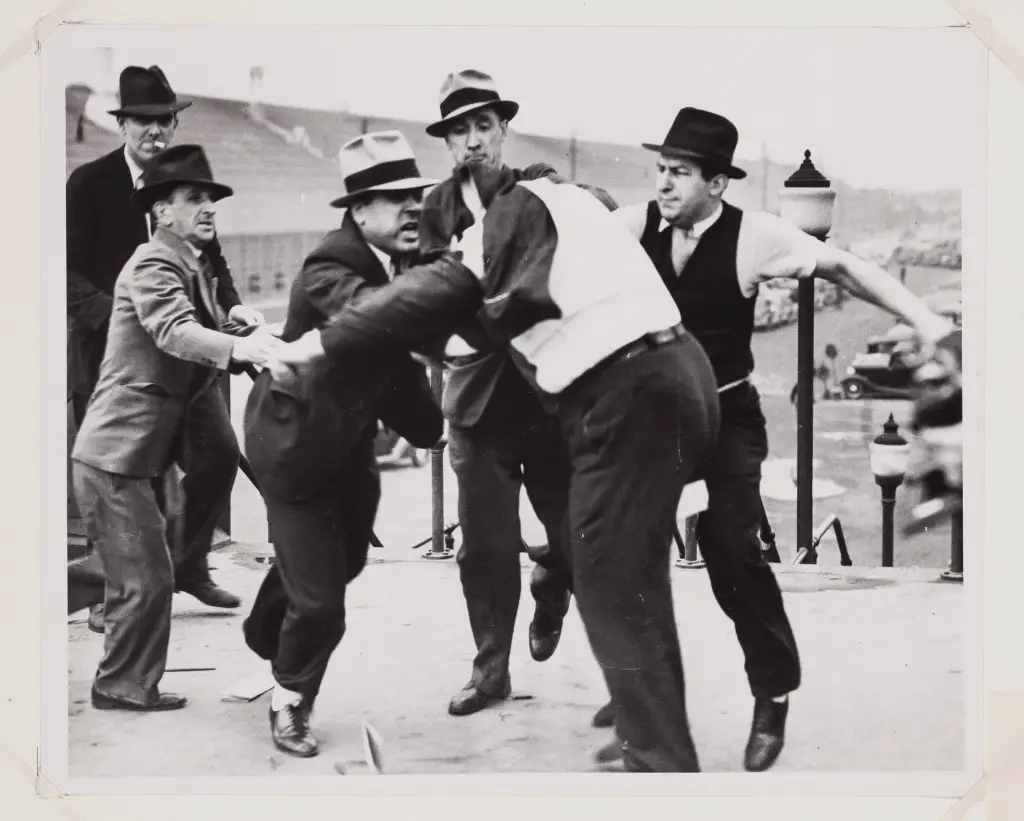
1935 the United Auto Workers Union was established in Detroit, Michigan. Following a three-month sit-down strike at several of the company’s operations in Flint, Michigan, General Motors became the first major automaker to unionize. Ford Motor Company did not organize until 1941.
1941 – Michigan’s Critical Role in World War II
Auto plants are converted to produce war materials, and Michigan becomes known as the “Arsenal of Democracy.”
1957 – The Two Peninsulas are Connected

The five-mile Mackinac Bridge opens on November 1, just in time for deer hunting. One of the longest suspension bridges in the entire world is the Mackinac Bridge. It is a little more than five miles long and connects Michigan’s upper and lower peninsulas. It connects Lake Michigan and Lake Huron by spanning the Mackinac Straits. The “Mighty Mac” was constructed over the course of three years, becoming operational in 1957.
The Mackinac Bridge is the world’s longest suspension bridge overall, but its main span is just the 24th longest in the world. In the United States, it is the third-longest important stretch.
1967 – The Detroit Racial Riots

Riots erupt in Detroit amid racial tensions. The 1967 Detroit Riot, also known as the 12th Street Riot or Detroit Rebellion, was the bloodiest urban riots in the United States during the summer of 1967. It began during the early morning of early morning hours of Sunday, July 23, after a police raid of an illegal bar or “blind pig.”
1975 – The Sinking of the Edmund Fitzgerald
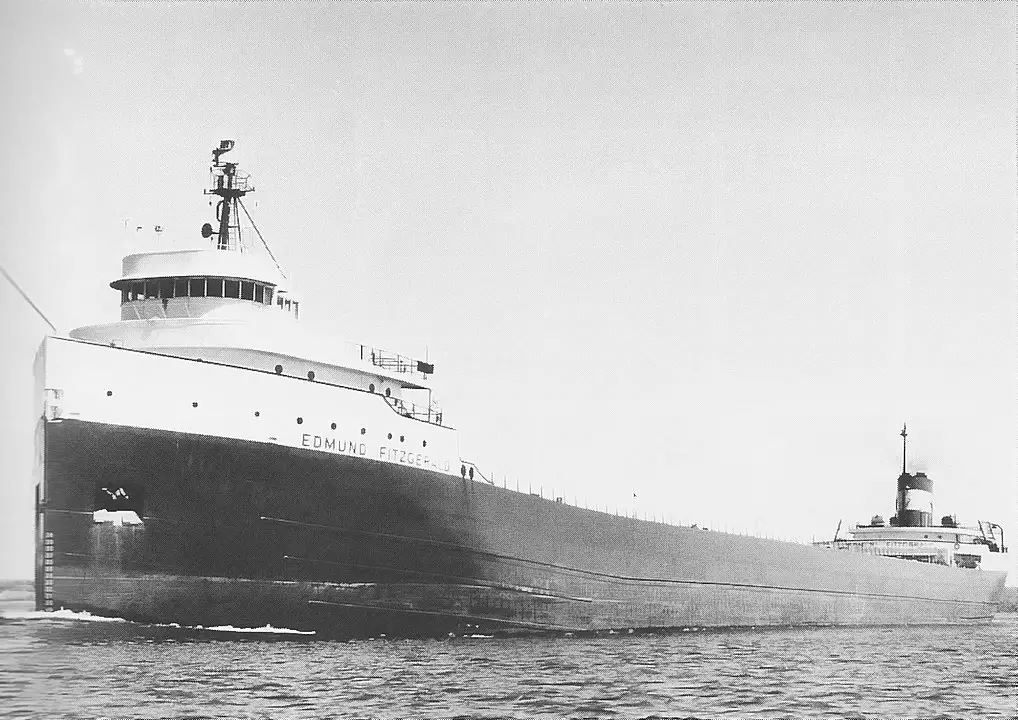
On November 10, 1975, Edmund Fitzgerald was lost on Lake Superior with her crew of 29 men aboard, 17 miles northwest of Whitefish Point, Michigan.
At the Burlington Northern Railroad Dock No. 1 in Superior, Wisconsin, on November 9, 1975, Edmund Fitzgerald’s final voyage got underway. Taconite pellets totaling 26,116 long tons had been put into the ship by Captain Ernest M. McSorley. She departed Superior at 2:30 pm, and the Arthur M. Anderson, commanded by Captain Bernie Cooper, which had left Two Harbors, Minnesota, soon followed her.
Weather conditions worsened while the ship traveled on a northerly path to avoid the headwinds. At 7 o’clock in the evening on November 9, gale warnings were issued, upgraded to storm warnings early on November 10. Even though the weather was terrible, with gusts gusting to 50 knots and waves between 12 and 16 feet high, both Captains had experience navigating their ships in comparable circumstances.
According to Captain Cooper, a massive wave was enveloping their entire ship from behind at around 6:55 p.m. He and the men in Anderson’s pilothouse felt a “bump,” felt the ship sway, and then turned to see it. The wave swept Anderson’s bow into the water as it traveled around the deck and crashed against the back of the pilothouse.
“Then the Anderson just raised up and shook herself off of all that water – barrooff – just like a big dog. Another wave, just like the first one or bigger, hit us again. I watched those two waves head down the lake towards the Fitzgerald, and I think those were the two that sent him under.”
Sea return continued to block Anderson’s radar signal of the Fitzgerald. The signal then disappeared at about 7:15 pm, but this time it did not turn up again. Around 7:22 p.m., the first mate Morgan Clark contacted the Fitzgerald again. No response was given.
1987 – Michigan Sesquicentennial
Michigan celebrates 150 years of statehood.
1992 – Michigan Capital Restoration Completed
The Capitol is fully restored and rededicated. A constitutional amendment is adopted to limit the number of terms an official can serve as Governor, federal or state senator, or representative.
2001 – Detroit Tercentennial
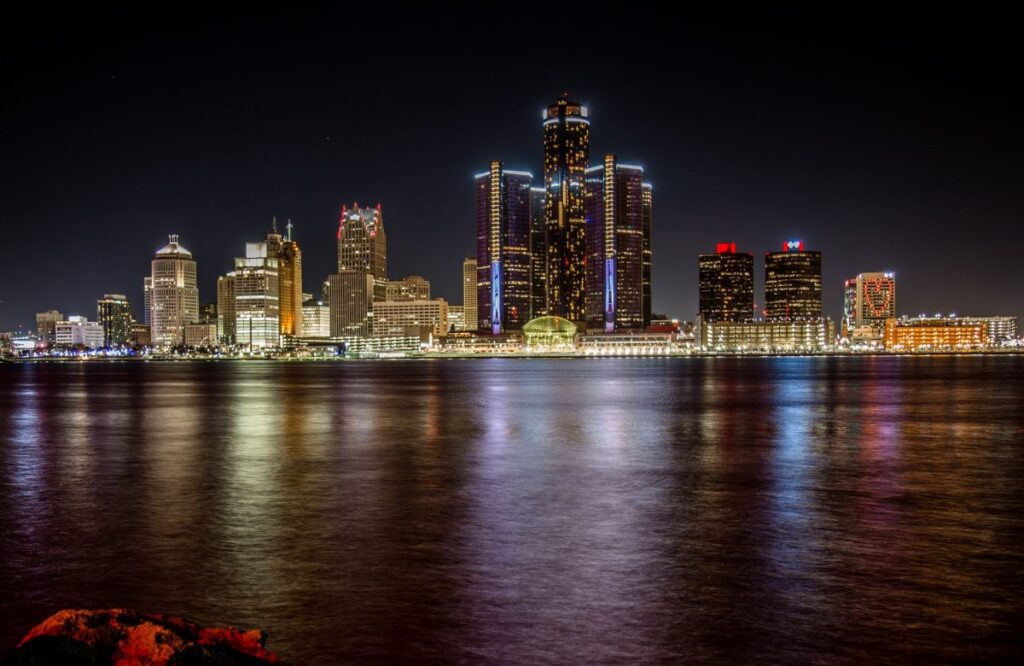
Detroit celebrates its 300th anniversary.
2002 – First Woman Governor of Michigan
Jennifer M. Granholm becomes Michigan’s first woman governor.
2008 – Real Estate and Credit Crisis Hits Michigan
The credit crisis of 2008 triggers a severe economic downturn, causing the bankruptcy of General Motors and Chrysler.
2010 – Michigan Population Shrinks
Michigan’s resident population declines between 2000 and 2010 to 9,888,635, resulting in the loss of one Congressional seat in the U.S. House of Representatives.
2013 – Detroit Goes Bankrupt
Representative John D. Dingell, Jr. is honored as the longest-serving member in the history of the U.S. Congress. The city of Detroit filed for bankruptcy protection in U.S. District Court. It is the largest municipality in U.S. history to file for bankruptcy.
2014 – Flint Water Crisis

Flint switched drinking water sources from Detroit’s system to the Flint River, causing the leakage of toxic amounts of lead from pipes throughout the city. The fallout from the Flint Water Crisis continues today.
2020 – Chaos at the Michigan Capital
As a result of the Corona Virus Pandemic lockdowns and political division, armed protesters took control of the Michigan Capita on April 20. Some view this as a dress rehearsal for January 6, 2021, insurrection at the United State Capital in Washington, D.C.
FAQs – Famous Events in Michigan
What are some of the earliest significant events in Michigan’s history?
Some of the earliest significant events in Michigan’s history include the founding of Detroit by Antoine de la Mothe Cadillac in 1701, marking the establishment of the oldest city in the Midwest. Additionally, the establishment of the first European settlement in Sault Ste. Marie in 1668 played a crucial role in the region’s early history. Moreover, the signing of the Treaty of Paris in 1783 formally transferred Michigan from British to American control, shaping its future as a territory and eventually a state.
How did Michigan contribute to the Civil War?
Michigan made significant contributions to the Civil War effort. The state provided over 90,000 troops to the Union Army, ranking third among Northern states in terms of the percentage of its population serving in the war. Michigan soldiers fought in key battles such as Gettysburg and Antietam, demonstrating their bravery and dedication to the Union cause. Additionally, Michigan was a hub of abolitionist activity and played a vital role in the Underground Railroad, aiding escaped slaves on their journey to freedom.
What were some key events in Michigan’s industrial and economic development?
Michigan’s industrial and economic development is marked by several key events that have shaped its identity. The founding of the Ford Motor Company in 1903 revolutionized the automotive industry and transformed Michigan into a global manufacturing hub. The construction of the Mackinac Bridge in 1957 connected the state’s upper and lower peninsulas, facilitating trade and tourism. Furthermore, Michigan’s resilience during challenging times, such as the Great Depression and World War II, underscored its role as a powerhouse in manufacturing and innovation, driving economic growth and prosperity.
References For Significant Events in Michigan History
The Library of Michigan Presents: Michigan in Brief. https://www.michigan.gov/libraryofmichigan/public/michigan/home-intro/the-library-of-michigan-presents-michigan-in-brief
Cadillac, Antoine de la Mothe | Detroit Historical Society. https://detroithistorical.org/learn/encyclopedia-of-detroit/cadillac-antoine-de-la-mothe
Northwest Ordinance (1787) | National Archives. https://www.archives.gov/milestone-documents/northwest-ordinance
What Is Michigan Known For? – 20 Little-Known, But Eye … – Thumbwind. https://thumbwind.com/2022/07/26/what-is-michigan-known-for/
1881 Michigan Fire Forever Changed The Thumb • Thumbwind. https://thumbwind.com/2021/09/04/1881-michigan-fire/
William Asa Raymond, Detroit, ca. 1837, graphite pencil on white wove paper. Detroit Institute of Arts, Gift of Alexander B. Raymond, 00.9.
American; after Edward Walsh, Detroit in 1804, between 19th and 20th century, reproduction of a watercolor. Detroit Institute of Arts, Bequest of Hal H. Smith, 45.278.
William Asa Raymond, Capitol at Detroit, c. 1837, graphite pencil on cream wove paper. Detroit Institute of Arts, Gift of Alexander B. Raymond, 00.11.
Jerry A. Hostetler, Riot at 12th and Clairmont Streets, Detroit, 1967, silver print. Detroit Institute of Arts, Gift of The Detroit News, 74.150.
James R. Kilpatrick, Battle of the Overpass, Ford Motor Co., U.A.W., 1937, gelatin silver print. Detroit Institute of Arts, Gift of The Detroit News, 74.155.
Cornelius Tiebout; after Thomas Birch, The Constitution and the Guerriere, 1813, engraving printed in black ink, colored by hand. Detroit Institute of Arts, Founders Society Purchase, Gibbs-Williams Fund, 57.134.
Burton, C. M. (1909). Governor Hull’s Pardon. Michigan History Magazine, 3(22).
Michigan Department of Natural Resources. (n.d.). Michigan Territorial Era.
Widder, K. R. (2012). William Hull. In Encyclopedia of the War of 1812.

